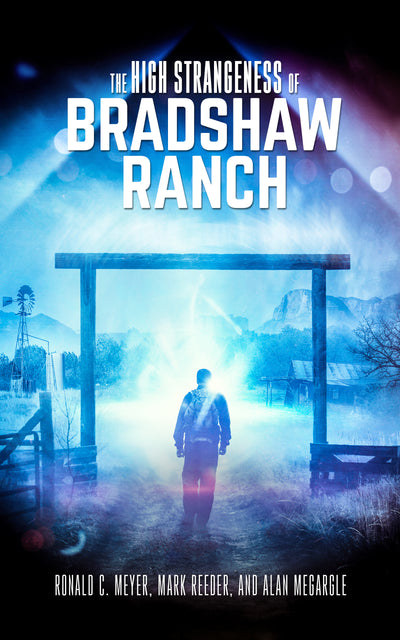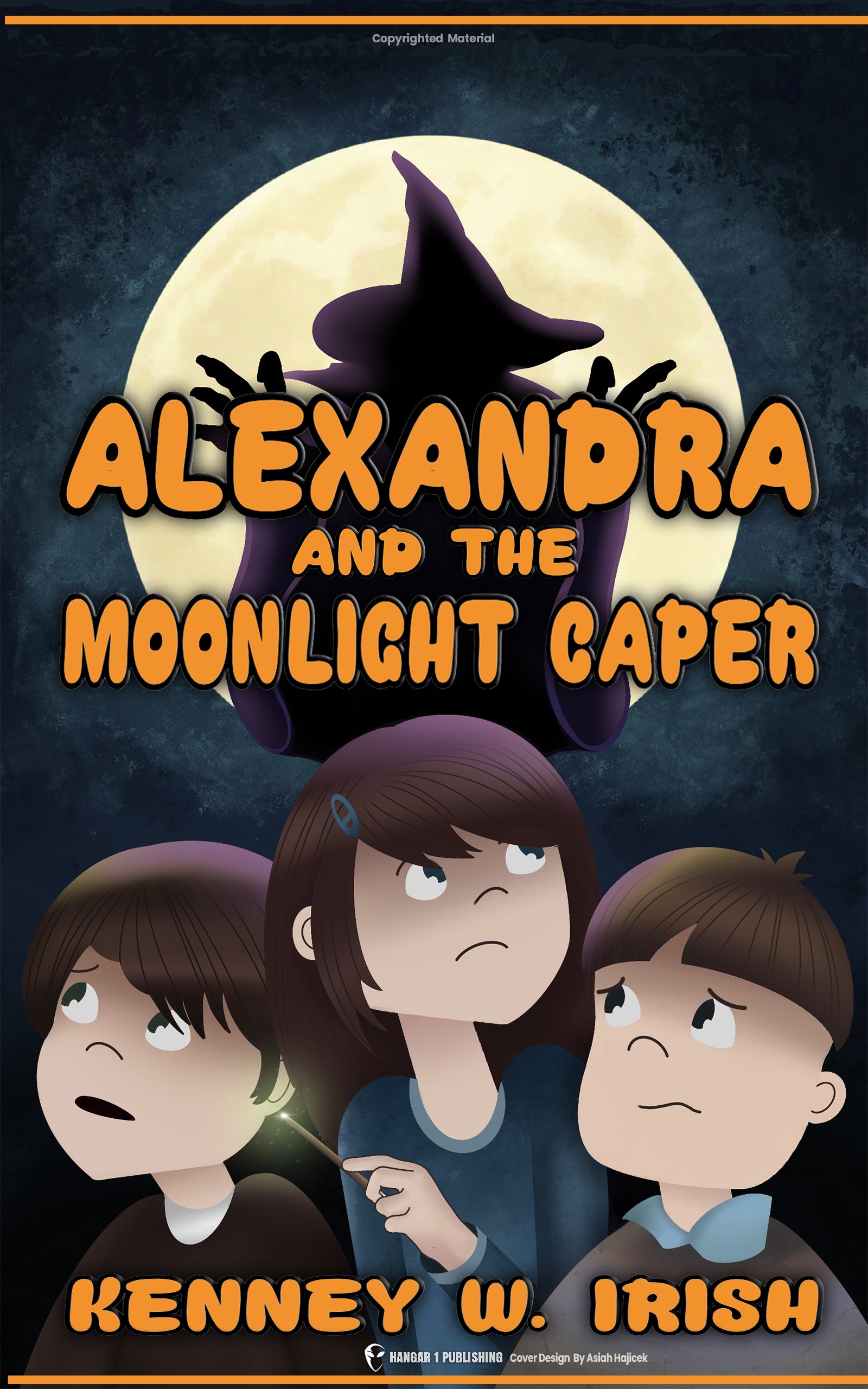The Vril Society: Fact, Fiction, and Nazi Connections

By Elaine Westfield, Ufologist
The Seed of the Legend: Edward Bulwer-Lytton's The Coming Race
What if a Victorian science fiction novel inspired a secretive German occult group that allegedly channeled messages from aliens, built advanced flying saucers, and influenced the highest echelons of the Nazi regime? This is the tantalizing premise behind the Vril Society – a supposed organization whose story weaves together threads of mysticism, futuristic technology, extraterrestrial contact, and the darkest chapter of 20th-century history.
The Vril Society (or Vril Gesellschaft) stands as one of history's most puzzling organizations – allegedly playing a pivotal role in Nazi Germany's rise and technological development, while others maintain it never existed at all. The group's purported activities range from communicating with beings from distant star systems to constructing anti-gravity aircraft and establishing secret bases in Antarctica.
Yet for all these sensational claims, there's surprisingly little concrete evidence to support the Vril Society's existence – at least in the form described by its proponents. The gap between what's claimed about the Vril Society and what can be historically verified is vast and telling.
In this exploration, we'll trace the origins of the Vril concept in Victorian literature, follow its adoption by occult circles, examine the alleged key figures like the mysterious medium Maria Orsic, unravel the purported connections to Nazi leadership, evaluate claims of advanced technology and alien alliances, and consider the legacy of this persistent conspiracy theory.
The Seed of the Legend: Edward Bulwer-Lytton's The Coming Race
The story of the Vril Society begins not in the secret chambers of interwar Germany but in the pages of a novel published in 1871. Edward Bulwer-Lytton, a Victorian-era English writer and politician, anonymously published "The Coming Race" (later republished as "Vril: The Power of the Coming Race"), a work that would have consequences far beyond what its author likely intended.
Bulwer-Lytton wasn't just any novelist – he coined phrases that survive to this day, including "the pen is mightier than the sword" and the infamous opening line "It was a dark and stormy night." While contemporary literary critics remember him mainly for his florid prose (there's even a bad writing contest named after him), his science fiction novel planted the seed for what would become a persistent conspiracy theory.
"The Coming Race" tells the story of an American who accidentally discovers a subterranean civilization while exploring a mine. This underground society is inhabited by the Vril-ya, a physically and intellectually superior race who have harnessed an incredible energy source called "Vril." This "all-permeating fluid" gives them powers that border on magical – they can heal, destroy, influence minds, and control matter through the power of will alone.
The Vril-ya society described in the novel is distinctly utopian yet troubling by modern standards. They've eliminated war and crime but practice eugenics. They've achieved gender equality of a sort, with women physically larger and stronger than men, yet their society remains rigidly hierarchical. They've rejected democracy (which they dismissively call "Koom-Posh" and describe as a "heaving quagmire") in favor of a benevolent autocracy. The narrator ultimately escapes and warns humanity that these superior beings may one day emerge from their subterranean realm to conquer the surface world.
While Bulwer-Lytton's contemporaries recognized "The Coming Race" as social satire in the vein of Swift's "Gulliver's Travels," some readers interpreted it quite differently. Certain occult circles became convinced that the novel wasn't mere fiction but a thinly veiled revelation of actual truth. They believed Bulwer-Lytton, rumored to be connected to Rosicrucian societies, was using the novel as a vehicle to disclose secret knowledge about a real universal force – Vril.
The concept even entered popular culture. "Vril" briefly entered the Victorian lexicon as a term for any strength-giving elixir. This cultural impact is immortalized in the beef extract product "Bovril," whose name ingeniously combines "bovine" with "Vril" – literally, cow-power. This curious branding decision from 1889 remains one of the most tangible legacies of Bulwer-Lytton's fictional force.
From Fiction to Esoteric Belief: Vril in Occult Circles
The leap from fictional concept to esoteric belief didn't happen by chance. The late 19th and early 20th centuries witnessed a remarkable revival of interest in occultism, mysticism, and alternative spiritual traditions across Europe and America. This period saw the formation of numerous magical orders, the popularity of séances and spiritualism, and a general reaction against scientific materialism and conventional religion.
Into this receptive environment stepped Helena Blavatsky, the Russian-born co-founder of the Theosophical Society and one of the most influential figures in modern Western esotericism. Blavatsky played a crucial role in transforming Vril from literary device to occult principle. In her 1877 work "Isis Unveiled," she presents Vril as a genuine, independent force rather than fiction. By her second major work, "The Secret Doctrine" (1888), she had incorporated Vril into her complex cosmology, claiming that the inhabitants of the lost continent of Atlantis had used this force to construct their magnificent civilization.
According to Blavatsky's teachings, when Atlantis fell, a small group of priest-initiates preserved the knowledge of Vril, passing it down through the ages to a select few deemed worthy of such power. This secret tradition supposedly continued through ancient Egypt, India, and ultimately to certain modern esoteric groups – creating a lineage of hidden wisdom that Theosophy claimed to tap into.
What made Vril so appealing to occultists was its compatibility with other esoteric concepts of universal energy – chi in Chinese tradition, prana in Hindu philosophy, the Odic force proposed by Baron Carl von Reichenbach, or the astral light of the Hermeticists. All these traditions posited the existence of a subtle energy that permeated the cosmos and could be manipulated by trained adepts.
Vril became particularly associated with the idea of developing a "magic technique" – a systematic approach to harnessing cosmic forces that would unite science and spirituality. This was especially appealing during a period when new scientific discoveries like X-rays, radioactivity, and electricity were revealing previously invisible forces at work in the world. If science could discover such wonders, many reasoned, perhaps the ancient wisdom traditions had been right all along about other hidden energies.
Between 1874 and 1924, four German translations of "The Coming Race" were published, including one commissioned by Rudolf Steiner, the founder of Anthroposophy. These translations helped the concept of Vril spread throughout Germany's already-thriving occult communities. By the traumatic aftermath of World War I, the stage was set for Vril to transition from a general esoteric concept to the supposed focus of a specific, secretive organization.
The Birth of a Conspiracy: The Alleged Vril Society in Germany
Post-WWI Germany was a nation in crisis – militarily defeated, economically devastated, and politically unstable. The collapse of the monarchy and the humiliating terms of the Treaty of Versailles created a psychological wound in the German national psyche. Many Germans sought explanation and meaning in this chaos, and some turned to occult and esoteric interpretations of history and destiny.
This was the fertile soil in which the legend of the Vril Society allegedly took root. But did such a society actually exist? The historical record is frustratingly sparse.
One of the few contemporary references comes from Willy Ley, a German rocket pioneer who fled Nazi Germany in 1935. In a 1947 article for the American magazine "Astounding Science Fiction," Ley attempted to explain the irrational beliefs that had flourished in pre-war Germany. Among various examples, he mentioned "a group which I believe was called Wahrheitsgesellschaft – Society for Truth – and which devoted its spare time looking for Vril."
According to Ley, this curious group knew that Bulwer-Lytton's book was fiction but believed it contained genuine truths about a real force. They supposedly sought to discover Vril through unusual methods, including "contemplating the structure of an apple cut in half." Ley's brief account suggests a fringe group of limited influence rather than a powerful secret society.
There is evidence of at least one small Berlin-based circle that explicitly focused on the Vril concept. In 1930, two pamphlets were published: "Weltdynamismus" (World Dynamism) and "Vril: Die kosmische Urkraft" (Vril: The Cosmic Primal Force). These were issued by a group calling itself the "Reichsarbeitsgemeinschaft 'Das kommende Deutschland'" (Reich Working Group "The Coming Germany"), or RAG for short.
The RAG claimed to possess technology capable of harnessing Vril energy, though their descriptions closely resembled earlier perpetual motion machine proposals. Intriguingly, their publications did include discussions of an apple cut in half as a model for understanding earth energies – matching Ley's later description. The group appears to have been founded by a figure using the pseudonym Johannes Täufer (literally "John the Baptist"), but little else is known about them, and no records confirm their activities beyond 1930.
The similarities between Ley's account and the RAG publications suggest they might have been the same group – a small, short-lived organization with marginal impact on Germany's occult landscape. There's no evidence in official registers or contemporaneous sources of a formal "Vril Society" wielding significant influence or technological prowess.
Yet this scant historical kernel would later be elaborated into a grand conspiracy narrative involving Nazi leadership, extraterrestrial contact, and futuristic technology.
Maria Orsic: The Medium and the Message from Aldebaran
At the center of the modern Vril Society mythology stands a figure as mysterious as she is captivating: Maria Orsic (also spelled Orsitch, Orsic, or Oršić). According to the legend, this Croatian-born medium formed the core of the Vril Society in the early 1920s alongside another woman known only as Sigrun.
The narrative portrays Orsic as a striking beauty with extraordinary psychic abilities who served as the primary channel between the Vril Society and otherworldly intelligences. What distinguishes her story from conventional spiritualist accounts is the alleged source of her messages: beings from the Aldebaran star system, located some 65 light-years away in the constellation Taurus.
According to this narrative, in December 1919, Maria Orsic and other mediums in the Vril inner circle held a pivotal séance in a forested area near Berchtesgaden. There, Orsic purportedly received telepathic communications in two strange scripts. One resembled ancient Templar writing, while the other was utterly unknown. When the second script was eventually "translated," it supposedly turned out to be Sumerian – the language of one of Earth's oldest civilizations.
The content of these channeled messages was extraordinary: they claimed to come from humanoid beings from a planet in the Aldebaran system. These entities revealed that they had visited Earth half a billion years ago and established the Sumerian civilization as a colony. More remarkably, they claimed a connection between their language and both Sumerian and German, suggesting a shared ancestry between Aldebarans and Germanic peoples.
Perhaps the most distinctive visual element of the Orsic legend is the curious detail about the hair of the female Vril Society members. They reportedly kept their hair extraordinarily long – never cutting it – based on the belief that it functioned as a psychic antenna, facilitating communication with extraterrestrial entities. This striking image of beautiful women with floor-length hair contacting alien intelligence has become iconic in Vril Society lore.
But the channeled information wasn't merely philosophical or spiritual guidance. According to the legend, the Aldebarans provided detailed technical specifications for the construction of an interdimensional traveling machine or flying disc. This purported technology transfer forms the bridge between the occult aspects of the Vril Society story and the more science-fiction elements involving Nazi flying saucers and advanced propulsion systems.
The legend concludes dramatically with Maria Orsic's sudden disappearance in March 1945. Shortly before the fall of Nazi Germany, she allegedly sent a message to Vril Society members containing the cryptic phrase "niemand bleibt hier" ("nobody stays here"). After this, she and other core members supposedly vanished without a trace. True believers suggest they escaped to Aldebaran using their perfected Vril craft.
As captivating as Maria Orsic's story may be, it's crucial to note that no contemporary historical records confirm her existence or activities. Her story appears to have emerged decades after the war, primarily in conspiracy literature of the 1990s. No photographs of Orsic can be verified as authentic, and no Nazi-era documents mention her or her alleged psychic work.
The Vril Society and the Thule Society: A Tangled Web
The narrative of the Vril Society becomes particularly complex when examining its alleged relationship with the Thule Society (Thule-Gesellschaft), an organization that, unlike the Vril Society, unquestionably existed in historical reality.
Founded in 1918 by Rudolf von Sebottendorf, the Thule Society was an actual völkisch (folkish) group in Munich that combined Germanic nationalism, racist ideology, and occult interests. Its name referenced the mythical northern land of Thule, believed by some to be the original homeland of the "Aryan race." The Thule Society functioned as a front for the German Workers' Party (Deutsche Arbeiterpartei), which would later evolve into the Nazi Party under Hitler's leadership.
In the conspiracy narrative that emerged decades later, the Vril Society is often portrayed as an inner circle or specialized offshoot of the Thule Society – focusing more intensely on esoteric practices, alien contact, and advanced technology. The relationship is sometimes described as the Thule Society dealing with political matters while the Vril Society handled the deepest occult secrets and technological development.
Both groups reportedly shared an interest in ancient civilizations like Atlantis and Hyperborea, lost knowledge, and the concept of an Aryan master race with superhuman potential. This alignment with Nazi racial ideology makes the Vril-Thule connection a particularly troubling aspect of the legend.
The two societies are also linked through their adoption of potent symbols. The Thule Society used the swastika, an ancient symbol found across many cultures that was later appropriated by the Nazi Party. The Vril Society, meanwhile, is associated with the "Black Sun" (Schwarze Sonne), a symbol consisting of a sun wheel with twelve radial sig runes. Proponents of the Vril mythology claim this symbol represented the "infinite beam of light" that was the source of Vril power, suggesting it had been used in ancient Babylonian and Assyrian places of worship.
According to the legend, the two societies collaborated closely, particularly on developing flying disc technology. The Thule Society allegedly focused on larger combat-oriented craft called "Haunebu," while the Vril Society concentrated on smaller, reconnaissance-type vehicles called "Vril discs." This technological partnership supposedly accelerated after the Nazi rise to power brought state funding and resources.
Historically, we know the Thule Society did exist and did have connections to early Nazi figures, though its direct influence on Nazi ideology remains debated among historians. Unlike the Vril Society, however, the Thule Society's existence is documented in contemporaneous sources, membership lists, and official records. It declined in significance after Hitler's rise to power and was effectively defunct by the mid-1930s – contrary to conspiracy theories that place it at the center of Nazi occult activities throughout the war.
The blending of the documented Thule Society with the largely invented Vril Society creates a narrative that's difficult to untangle – mixing verifiable historical elements with fantastical claims. This intertwining has helped give the Vril Society legend a veneer of plausibility by association with a group that indisputably existed.
Alleged Nazi Connections and Influence
The most controversial aspect of the Vril Society legend is its purported connection to the highest echelons of Nazi leadership and its alleged influence on the Third Reich's development and policies.
According to various conspiracy narratives, prominent Nazi leaders including Adolf Hitler, Heinrich Himmler, Hermann Göring, and Rudolf Hess were either full members of the Vril Society or were significantly influenced by its teachings and technology. Some versions of the story claim that Hitler was initiated into occult mysteries by Dietrich Eckart, an early Nazi ideologue who allegedly told followers on his deathbed: "Follow Hitler! He will dance, but it is I who have called the tune. I have initiated him into the 'Secret Doctrine', opened his centers in vision and given him the means to communicate with the Powers."
It's certainly true that some Nazi leaders showed interest in occult and esoteric matters. Heinrich Himmler, Reichsführer of the SS, had a well-documented fascination with mysticism, Germanic paganism, and the occult. He established the Ahnenerbe (Ancestral Heritage Research and Teaching Society), which conducted research expeditions searching for evidence of ancient Aryan civilizations, including trips to Tibet between 1938 and 1943.
The alleged Vril-Nazi connection gained additional dimensions through claims that the society's alien-derived technology and occult knowledge provided the Third Reich with unprecedented advantages. Some versions suggest that the Vril Society's mediums, including Maria Orsic, channeled information about advanced propulsion systems, weapons, and even mind control techniques from their extraterrestrial contacts.
Another curious element of the alleged Vril-Nazi connection concerns Hitler's 1941 ban on secret societies. In reality, this prohibition primarily targeted Freemasonry and other groups perceived as connected to Jewish influences or international networks. However, conspiracy theories provide a different explanation: that the Vril Society wasn't actually banned but instead incorporated directly into SS technical divisions (particularly the apocryphal "SS E-IV Unit") to continue its work under official auspices and better security.
Some of the more extreme versions of the Vril narrative even claim that the society was in ongoing communication with a race of malevolent extraterrestrials – variously described as Reptilians from Alpha Draconis or the "Draco-Orion Imperialists" – who had made a pact with the Nazi leadership. According to this narrative, these entities provided technological assistance in exchange for certain concessions, possibly including human experimentation.
These assertions stretch credibility far beyond breaking point. No authentic Nazi documents mention a Vril Society, Maria Orsic, or alien technology transfer. No verified photographs show Nazi officials at Vril Society gatherings. No wartime Allied intelligence reports mention such a group, despite extensive efforts to understand Nazi occult interests.
While certain Nazi leaders did have documented interests in occultism, and organizations like the Ahnenerbe did conduct research into mystical subjects, the evidence for a powerful, technologically advanced Vril Society influencing Nazi policy and receiving state support simply doesn't exist. The Vril-Nazi connection appears to be largely a post-war construction, elaborated over decades by authors blending fragmentary historical facts with increasingly fantastical speculation.
Fantastical Claims: Advanced Technology and Alien Alliances
Perhaps the most captivating aspect of the Vril Society legend concerns the alleged development of revolutionary technology, particularly flying discs or "Reichsflugscheiben" – Nazi flying saucers – supposedly designed using information channeled from extraterrestrial sources.
According to these narratives, the Vril Society's first major technological breakthrough came in the early 1920s with the construction of a device called the JFM (Jenseitsflugmaschine or "Beyond Flying Machine"). This prototype allegedly demonstrated the basic principles of using electromagnetic fields and Vril energy for anti-gravity propulsion.
As the legend goes, this early work evolved into a comprehensive development program after the Nazi rise to power. The Vril Society purportedly focused on smaller craft designated as the RFZ (Rundflugzeug or "Round Aircraft") series, while their Thule Society counterparts developed the larger Haunebu series. These craft reportedly utilized revolutionary propulsion systems with names like the "Schumann-Munich Levitator" or the "Thule Triebwerk" (Thule Thrustwork) – a fantastical electromagnetic-gravitic engine described as combining a modified "Hans Coler Magnetstromapparat" with a "Marconi dynamo" containing heated, spinning mercury.
The capabilities attributed to these alleged craft are extraordinary. Some accounts claim they could reach speeds of 300,000 kilometers per hour, operate in space and underwater, make right-angle turns at full speed without affecting the pilots, and even disappear from radar by "jumping" between dimensions. The larger Haunebu III was allegedly capable of interplanetary travel.
Some versions of the story include claims of a massive cylindrical mothership called the Andromeda-Gerät (Andromeda Device), measuring 139 meters in length and capable of carrying smaller craft for extended missions. And even more fantastically, an extraordinarily advanced surveillance device called the "Vril Magic Eye" is sometimes mentioned – a probe that could allegedly shift between dimensions to conduct undetectable espionage.
The alien connection ranges from the relatively modest claim that the Vril Society channeled technical information from Aldebaran to the more extravagant assertion that actual extraterrestrial beings worked alongside German scientists in underground facilities. Some narratives even suggest that the Germans discovered a crashed alien spacecraft in the Black Forest in 1936 and reverse-engineered its technology.
One particularly strange branch of these theories involves the idea of Nazi human cloning programs. According to this narrative, an examination of bodies found at a secret Antarctic base revealed individuals of identical height, weight, and appearance who lacked navels – suggesting they were clones rather than naturally born humans. This allegedly explained the "Lost Battalion" of 250,000 German troops unaccounted for after the war.
The most extreme version of the technology transfer narrative culminates with the claim that in early 1945, as Allied forces closed in, the Vril Society launched a spacecraft called Vril-Odin (alternatively designated Vril-7 or Vril-8) on a journey to Aldebaran. This craft supposedly utilized a "transdimensional canal" that allowed it to travel at three times the speed of light, reaching Aldebaran after several weeks of journey time.
All these sensational technological claims suffer from a fundamental problem: a complete absence of credible evidence. No authenticated blueprints, prototype components, test flight records, or physical artifacts of these alleged craft have ever been produced. No verified photographs or film of Nazi flying saucers exist. No captured German scientists admitted to working on such revolutionary technology during extensive post-war interrogations.
Secret Bases and Post-War Survival Myths
As the Third Reich collapsed in 1945, the Vril Society narrative doesn't end – it merely shifts location. According to the legend, key members of the society, along with Nazi elites and their miraculous technology, escaped the Allied advance to continue their work from hidden redoubts around the world and beyond.
The most persistent of these escape myths centers on Antarctica. According to this theory, the Germans had been establishing a secret base called "New Swabia" (Neuschwabenland) in Queen Maud Land, Antarctica, since 1938, when they sent an expedition to claim territory on the continent. This base allegedly expanded into an underground city where the Vril Society, SS scientists, and high-ranking Nazis retreated as the war turned against them.
Some versions suggest this Antarctic base utilized vast cavern systems, possibly connecting to the "hollow earth" that figures prominently in certain conspiracy theories. Others propose that the base was built with the assistance of the same extraterrestrials who had provided the Vril Society with their advanced technology, or that it was constructed on top of an existing alien facility.
This Antarctic narrative is sometimes connected to the real historical expedition of Admiral Richard Byrd, who led "Operation Highjump" to Antarctica in 1946-47. The sudden termination of this mission before its scheduled completion has been seized upon by conspiracy theorists, who suggest Byrd's forces encountered and were defeated by advanced Nazi forces using Vril technology.
Even more fantastic claims place Nazi bases on the Moon, with some asserting that the Germans achieved a lunar landing as early as 1942 using Vril-powered spacecraft. These bases allegedly still exist today on the dark side of the Moon, hidden from Earth observation.
For Maria Orsic and other core Vril Society members, the most extraordinary escape story claims they used their advanced spacecraft to leave Earth entirely, traveling to the Aldebaran system to join their extraterrestrial allies. This scenario is typically connected to Orsic's final cryptic message and sudden disappearance in March 1945.
More mundane but still speculative accounts suggest that Vril Society members escaped to South America alongside other Nazi fugitives, particularly to Argentina, where they supposedly continued their work in remote locations. A variation on this theme places them in the Brazilian jungle or high in the Andes mountains.
These survival narratives feed into broader "Fourth Reich" conspiracy theories – the idea that the Nazi regime didn't truly end but went underground, preserving its ideology, technology, and power structures while waiting for an opportunity to reemerge. The hyper-advanced technology allegedly developed by the Vril Society would, according to this viewpoint, give such a resurgent Nazi movement unprecedented advantages.
In recent decades, these theories have occasionally been linked to modern claims of UFO activity or sightings of advanced aircraft, with some conspiracy theorists suggesting that what witnesses observe are not alien craft but the descendants of Nazi Vril technology still in operation.
Some even point to the self-proclaimed "government-in-exile" of Sealand (a micronation based on a former sea fort off the coast of England) and its promotion of "Vril free energy" as evidence of continuing Vril Society influence, though critics note this connection likely indicates links to neo-Nazi groups rather than actual historical continuity.
Despite their imaginative appeal, these survival and secret base narratives suffer from the same fundamental problem as other aspects of the Vril Society legend: a complete lack of credible evidence. No physical traces of massive Antarctic bases have been found. No authenticated Nazi documents outline plans for such facilities. No verifiable testimony from German personnel confirms their existence.
Discerning Fact from Fiction: Historical Analysis and Skepticism
When examining the Vril Society narrative, the most striking feature is the almost complete absence of contemporaneous evidence supporting its existence in the form described by conspiracy theorists. No verified wartime documents mention a "Vril Society" or "Vril Gesellschaft." No authenticated photographs show its alleged members. No Nazi records reference Maria Orsic or her supposed psychic communications.
This evidentiary void is particularly telling given the extensive documentation of the Nazi era. The Third Reich was a bureaucratic regime that kept meticulous records. Allied forces captured massive archives during and after the war. Intelligence agencies interviewed thousands of former Nazi officials and scientists. The absence of the Vril Society from this extensive historical record strongly suggests it did not exist – at least not as the powerful, technologically advanced, alien-connected organization portrayed in later accounts.
The detailed narrative of the Vril Society that circulates today emerges almost entirely from sources published decades after World War II. The first significant mention appears in Louis Pauwels and Jacques Bergier's 1960 book "Le Matin des Magiciens" (published in English as "The Morning of the Magicians" or "The Dawn of Magic"). This influential work blended verified historical facts with speculative theories about Nazi occultism but offered no rigorous documentation for its Vril Society claims.
The narrative expanded significantly in the 1990s through works by authors like Jan Udo Holey (writing as "Jan van Helsing"), whose books "Secret Societies and their Power in the 20th Century" (1993) and "Enterprise Aldebaran" (1997) elaborated on the earlier material, adding extensive details about flying discs, alien connections, and secret Antarctic bases – again without providing verifiable sources.
Many of these authors did not clearly distinguish between established historical facts, informed speculation, and outright fiction. The result is a narrative that incorporates fragments of truth – the existence of the Thule Society, Nazi interest in occultism, German expeditions to Antarctica, experimental aircraft programs – but extrapolates from them into fantastical realms unsupported by evidence.
It's also worth noting that some purveyors of the Vril Society legend have connections to neo-Nazi or esoteric right-wing movements. For these groups, the narrative serves to reframe the Third Reich in mystical terms, suggesting Nazi Germany was not merely a political movement but a metaphysical struggle with superhuman or otherworldly dimensions. This "spiritual" reinterpretation attempts to distance Nazism from its actual historical crimes while retaining and even glorifying its core ideologies.
Returning to Willy Ley's 1947 account – the earliest reference to a Vril-seeking group in Germany – it's important to recognize that he described a small, fringe organization of limited significance, not a powerful secret society at the heart of the Third Reich. The elaborate Vril Society narrative that developed later bears little resemblance to Ley's brief anecdote about an eccentric group contemplating apples.
This is not to say that occultism had no role in Nazi Germany. Heinrich Himmler's interest in mysticism and paganism is well-documented, as is the Ahnenerbe's research into Germanic folklore and supposed Aryan origins. But mainstream historical scholarship has found no evidence that these interests were connected to alien contact, advanced technology development, or a formal organization called the Vril Society.
The true story of Nazi technological development – their actual work on rockets, jet aircraft, and other advanced weapons – is well-documented and remarkable enough without introducing extraterrestrial elements. The V-2 rocket developed by Wernher von Braun's team represented a genuine breakthrough, as did the Messerschmitt Me 262 jet fighter. These real "wonder weapons" came too late to change the war's outcome but demonstrated significant scientific achievement within conventional physics.
The Enduring Legacy: Vril in Conspiracy Culture and Beyond
Despite lacking a foundation in historical evidence, the Vril Society narrative has demonstrated remarkable staying power, continuing to spawn books, documentaries, websites, and discussion forums well into the 21st century. This persistence raises an interesting question: why does this particular conspiracy theory resonate so deeply with certain audiences?
Part of the answer lies in the narrative's potent combination of elements. It incorporates Nazi Germany – an era of genuine historical darkness and fascination; occultism and esoteric traditions with their promise of hidden knowledge; advanced technology that defies conventional physics; and extraterrestrial intelligence suggesting humanity is not alone in the universe. Few conspiracy theories manage to integrate so many captivating threads into a single narrative.
The Vril Society story has proven remarkably adaptable, easily integrating with other conspiracy frameworks. It connects seamlessly with theories about a "New World Order," hidden elite control of society, suppressed free energy technology, and alien visitation. For those inclined toward conspiracist thinking, the Vril narrative provides a sort of universal adapter that can link disparate theories into a grander, unified worldview.
In popular culture, the concept has inspired novels, films, television programs, and video games. The Nazi-occult-alien connection features prominently in works like the Wolfenstein video game series, the Hellboy comics and films, and countless science fiction narratives. The Black Sun symbol associated with the Vril Society has become a recognizable motif even among those unfamiliar with its purported origins. These fictional treatments, ironically, often feed back into the conspiracy culture, blurring the already indistinct line between fact and fantasy.
For some contemporary fringe groups, the Vril concept remains an active spiritual pursuit. The "Church of Vrilology," for instance, combines neo-Norse religious elements with teachings about accessing Vril energy through meditation and ritual. Other groups promote "Vril technology" as a suppressed free energy solution that could provide unlimited, clean power if not for the machinations of governments and energy corporations.
The psychological appeal of such narratives shouldn't be underestimated. They offer a sense of special knowledge – the feeling of being privy to secrets hidden from the masses. They provide dramatic explanations for complex historical events, replacing messy, contingent reality with a more structured narrative involving clearly defined actors with superhuman capabilities and straightforward motivations. They create community among believers, who share the experience of seeing beyond the "official story" into what they consider deeper truths.
Perhaps most significantly, the Vril Society legend speaks to a persistent human desire to believe there's more to reality than what conventional science and history reveal – that mystical forces, higher intelligences, and extraordinary powers exist just beyond the veil of ordinary perception. This yearning for transcendence, for connection to something beyond mundane existence, has expressed itself through religious and spiritual traditions throughout human history.
The internet age has only accelerated the spread of such narratives, creating echo chambers where they can develop without critical challenge and reach global audiences instantly. What might once have remained an obscure theory in fringe publications can now gain worldwide circulation through websites, forums, social media, and video-sharing platforms.
Beyond the Veil: What Can We Learn?
The story of the Vril Society – from its origins in Victorian science fiction through its adoption by occult circles to its elaboration in modern conspiracy culture – offers a fascinating case study in how ideas evolve, transform, and persist regardless of their empirical foundations.
Edward Bulwer-Lytton could hardly have imagined that his novel would inspire not only a beef extract but also a complex conspiracy theory connecting Nazi Germany to aliens from Aldebaran. Yet his fictional creation of Vril energy proved to have a life far beyond the pages of "The Coming Race." The transformation of his literary device into an object of genuine belief demonstrates the power of compelling ideas to transcend their original context and intention.
The human attraction to secret knowledge and hidden histories remains a constant across cultures and eras. From ancient mystery cults to medieval alchemists to modern conspiracy theorists, there has always been an audience receptive to narratives that promise to pull back the curtain on reality and reveal deeper truths. The Vril Society legend, with its layers of secrecy and revelation, fits perfectly within this tradition.
The Nazi era continues to serve as a kind of historical black hole, exerting gravitational pull on the imagination and spawning countless alternative histories and secret narratives. Perhaps this reflects an unconscious desire to find otherworldly explanations for the very human atrocities committed during this period – as if ordinary people could not have perpetrated such horrors without supernatural or alien influence.
The boundaries between fiction, speculation, and belief are far more permeable than we might assume. Ideas can move fluidly between these realms, picking up new elements along the way. A concept introduced as explicit fiction (like Vril) can be adopted as speculative possibility by some readers, and eventually treated as established fact by later audiences who encounter it divorced from its original context.
In evaluating extraordinary claims about history, technology, or extraterrestrial contact, the principle of "extraordinary claims require extraordinary evidence" remains an essential guide. The Vril Society narrative, despite its elaborate detail and internal coherence, simply lacks the evidentiary foundation that would justify accepting its most sensational elements as historical fact.
Yet the absence of evidence doesn't diminish the narrative's significance as a cultural phenomenon worthy of study. The Vril Society legend reveals much about human psychology, our relationship with history, our fascination with the occult, and our persistent hope that there might be more to reality than what conventional wisdom acknowledges.
Did a powerful, technologically advanced Vril Society exist in Nazi Germany, channeling information from aliens and developing anti-gravity spacecraft? The historical evidence suggests not. But the idea of such a society – and the complex web of beliefs that has developed around it – exists as a potent force in our collective imagination, continuing to inspire, frighten, and fascinate those who encounter it.
From Bigfoot to UFOs: Hangar 1 Publishing Has You Covered!
Explore Untold Stories: Venture into the world of UFOs, cryptids, Bigfoot, and beyond. Every story is a journey into the extraordinary.
Immersive Book Technology: Experience real videos, sights, and sounds within our books. Its not just reading; its an adventure.


























